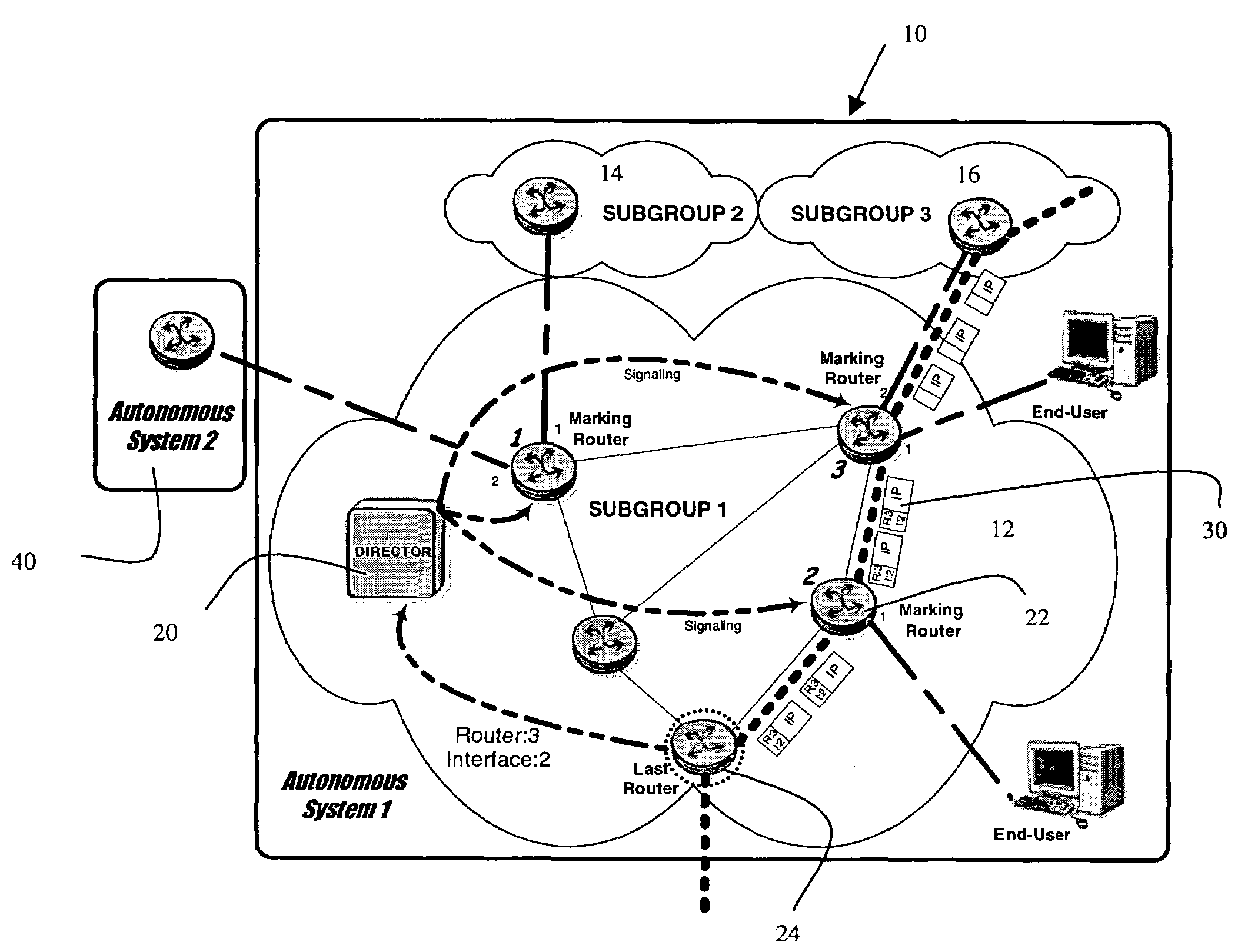Mechanism for tracing back anonymous network flows in autonomous systems
a network flow and autonomous system technology, applied in the field of wide area communication systems, can solve the problems of complete disruption of service for a targeted victim, difficulty in precisely identifying the real source, and alarming proportion of malicious attacks on the intern
- Summary
- Abstract
- Description
- Claims
- Application Information
AI Technical Summary
Benefits of technology
Problems solved by technology
Method used
Image
Examples
Embodiment Construction
[0018]As shown in FIG. 1 the invention applies to an Autonomous System shown generally at 10. Within the Autonomous System there may be one or more subgroups shown generally as subgroup 12 subgroup 14 subgroup 16. As shown in FIG. 1 subgroup 12 has multiple routers while subgroups 14 and 16 only show a single router. It is to be understood, of course, that subgroups 14 and 16 are likely to have multiple routers as well.
[0019]Within subgroup 12 there is shown a new element known as a Director 20—an entity detached from any subgroup—which has a full and complete vision of the AS networks topology. In the case of an Autonomous System running a Link State routing protocol like OSPF (Open Shortest Path First), every router participating in the routing session has this vision for its Area. The Director 20 is able to exchange information with any router in the Autonomous System.
[0020]The Autonomous System as shown comprises a network of routers 22 connected together to carry traffic from a...
PUM
 Login to View More
Login to View More Abstract
Description
Claims
Application Information
 Login to View More
Login to View More - R&D
- Intellectual Property
- Life Sciences
- Materials
- Tech Scout
- Unparalleled Data Quality
- Higher Quality Content
- 60% Fewer Hallucinations
Browse by: Latest US Patents, China's latest patents, Technical Efficacy Thesaurus, Application Domain, Technology Topic, Popular Technical Reports.
© 2025 PatSnap. All rights reserved.Legal|Privacy policy|Modern Slavery Act Transparency Statement|Sitemap|About US| Contact US: help@patsnap.com


